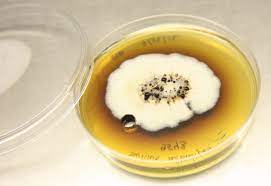When it comes to growing and studying fungi in a laboratory setting, Potato Dextrose Agar (PDA) is the go-to medium for scientists and researchers. But why is PDA so popular for cultivating fungi, and what makes it such a reliable choice? In this article, we’ll dive into the key reasons why PDA is used for fungi and explain it in simple terms, so even beginners can understand.
1. PDA is Rich in Nutrients
One of the main reasons PDA is used to grow fungi is because it’s packed with nutrients that fungi love. The medium is made from boiled potatoes, which provide a rich source of starches. These starches act as food for fungi, giving them the energy they need to grow and thrive.
Along with potatoes, PDA contains dextrose (a type of sugar), which serves as an additional energy source. Fungi can easily break down this sugar, allowing them to grow more quickly and produce visible colonies. In other words, PDA is like a buffet for fungi, filled with everything they need to flourish!

2. PDA Supports a Wide Range of Fungi
Another great feature of PDA is its ability to support the growth of many different types of fungi. Whether you’re working with molds, yeasts, or more complex fungal species, PDA can handle them all. This versatility makes it a preferred medium in laboratories around the world. From academic research to industrial applications, PDA is the universal choice for fungal cultivation.
3. PDA is Simple to Prepare and Use
You don’t need to be an expert to use PDA—it’s easy to prepare and simple to work with. The ingredients are boiled and then combined to make a gel-like substance. This mixture is poured into petri dishes and solidifies, creating the perfect surface for fungi to grow on.
The preparation process can be done in any basic lab, and since PDA is so widely available, it’s affordable and accessible for all types of experiments, whether in schools, universities, or research labs.
4. Acidic pH Favors Fungi
Fungi typically grow best in slightly acidic conditions, and PDA offers just that. The pH of PDA is usually around 5.6, which creates an environment that is perfect for fungal growth. This slight acidity discourages the growth of unwanted bacteria, making sure that the fungi have less competition as they colonize the medium.
In simple terms, the acidity of PDA is like rolling out the red carpet for fungi while keeping other microorganisms at bay.
5. Helps in Fungal Identification
PDA is not just for growing fungi—it’s also a great tool for identifying different fungal species. As fungi grow on the medium, they develop unique shapes, colors, and textures that can help researchers identify them.
For example, some fungi may produce spores that appear in specific colors, or they might grow in a particular pattern. The clear and consistent nature of PDA makes it easy to observe these characteristics, helping scientists learn more about the fungi they are studying.
6. Great for Fungal Reproduction Studies
PDA is also perfect for studying how fungi reproduce. Fungi can grow rapidly on PDA, producing spores that are easy to observe and collect. This allows scientists to explore different aspects of fungal reproduction, including spore formation, dispersal, and germination.
Whether researchers are looking at fungi for agricultural purposes, medical research, or environmental studies, PDA provides a reliable platform to examine these microscopic organisms.
7. Widely Used in Mycology
The study of fungi, called mycology, depends heavily on PDA as a tool for discovery. Whether in classrooms or cutting-edge research facilities, PDA is a cornerstone of mycological research. Its widespread use means that there are countless studies, papers, and experiments that have used PDA to uncover new fungal species or to study their behavior in controlled environments.
In short, PDA has a strong reputation because it works, and it continues to be a critical part of fungi research worldwide.
Conclusion
Potato Dextrose Agar is the ideal medium for growing fungi due to its nutrient-rich composition, easy preparation, acidic pH, and versatility. Its ability to support a wide variety of fungi, along with its affordability and effectiveness, makes it the top choice for fungal cultivation in laboratories everywhere.
Whether you’re a student learning about fungi for the first time or a researcher diving deep into fungal behavior, PDA provides a simple and reliable way to grow, observe, and study these fascinating organisms. The next time you see a petri dish with fungi growing on it, there’s a good chance it’s on Potato Dextrose Agar!
That’s all about Why is Potato Dextrose Agar (PDA) Used for Fungi?